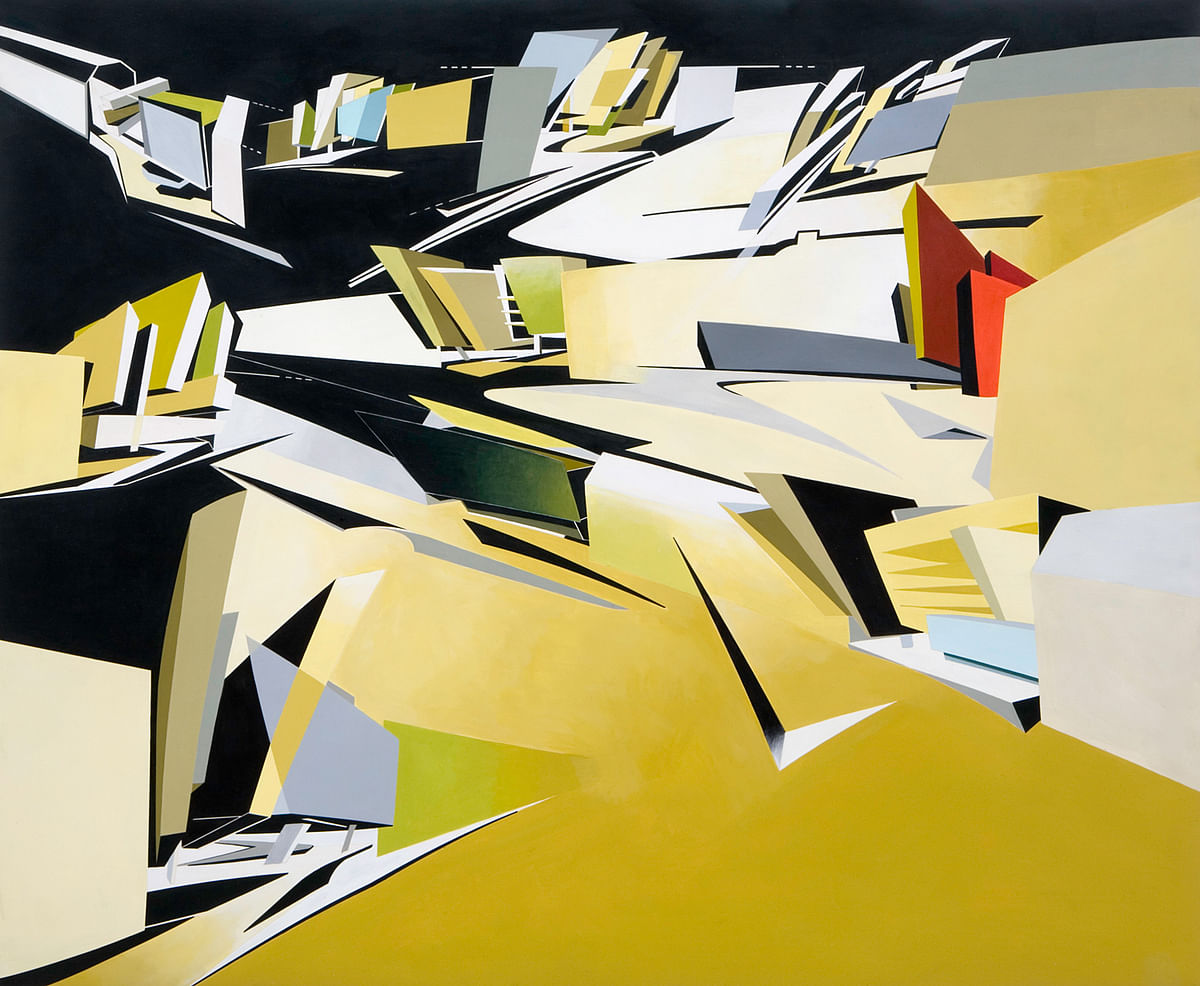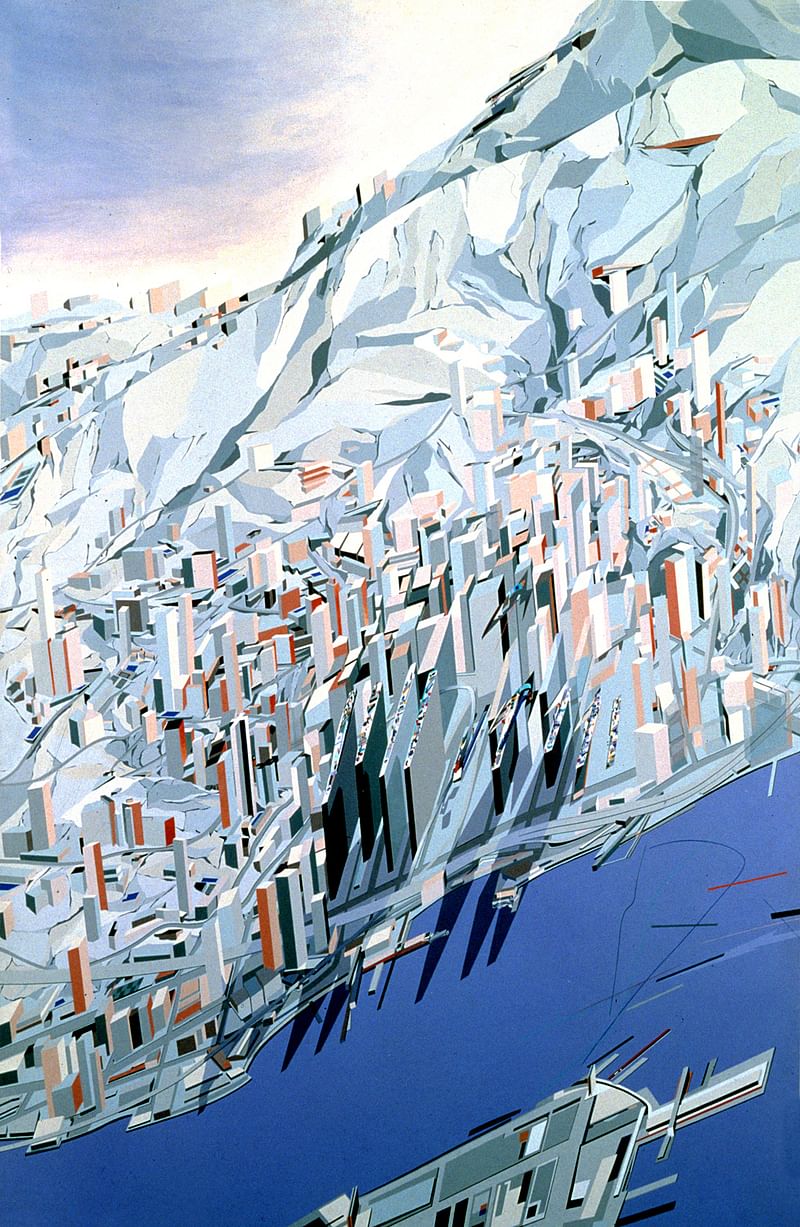
A Zaha Hadid retrospective will open in Venice on May 27
By Justine Testado|
Wednesday, May 18, 2016
Related
In memory of the late Zaha Hadid, the Fondazione Berengo cultural institution is paying tribute to the iconic architect with a retrospective exhibition of her work at the 16th-century Palazzo Franchetti, along the Grand Canal in Venice. The retrospective will officially open on May 27, right before the 2016 Venice Architecture Biennale will celebrate its own inauguration.
The exhibition will display many of Zaha Hadid's pioneering paintings, drawings, and models in her illustrious career that made her a designer and artist who was always ahead of her time. Think you've seen all of Hadid's works? Not so fast. This exhibition will also feature her works in progress, including architectural projects that are scheduled to complete later this year. Stunning photos of Hadid's buildings taken by architectural photographer Hélène Binet will also be showcased.
Open until November 27, the public can visit the exhibition every day of the week for an entry fee of €10.
Read on for more about the exhibition from the Fondazione Berengo.

The exhibition will show Zaha Hadid's early paintings, when she interacted with the Russian avant-garde art scene. Projects from that era include Malevich’s Tektonic (1976-77), Hadid’s fourth-year project at the Architectural Association School in London that bridged the River Thames; the competition winning Peak Club, Hong Kong (1982-83, unrealised); Hafenstrasse, Hamburg (1989, unrealised); Grand Buildings, Trafalgar Square, London (1985, unrealised); Victoria City master-plan for Berlin (1988, unrealised) and of course, the Cardiff Bay Opera House (1994-95, unrealised).

RELATED NEWS Zaha Hadid Architects to design Sberbank Technopark in “Russia's Silicon Valley”

Hadid described her meticulous design process as lengthy journeys full of unexpected turns, and the results speak for themselves. In previously discussing her paintings, she said: “My paintings really evolved thirty years ago because I thought the architectural drawings required a much greater degree of distortion and fragmentation to assist our research – but eventually it affected the work of course. In the early days of our office the method we used to construct a drawing or painting or model led to new, exciting discoveries.
We sometimes did not know what the research would lead to – but we knew there would be something, and that all the experiments had to lead to perfecting the project. It might take ten years for a 2D sketch to evolve into a workable space, and then into a realized building. And these are the journeys that I think are very exciting, as they are not predictable. For example, I used to produce hatched lines on my drawings. These became striated models, which eventually became the diagram for MAXXI Museum. So a simple idea like that would take quite a long journey.”

“Doing the drawings was a slow process, as they required tremendous concentration and precision,” Hadid continued. “The whole system of drawing led to ideas, putting one sheet over another and tracing and reworking, like a form of reverse archaeology in a way, leading to a layering process where distortion in the drawing could lead to distortion in the building. Or extruded drawings could lead to extruded sections in buildings. The processes led to literal translations in the building.”

RELATED NEWS AIA UK honors 2016 Excellence in Design Awards winners, pays tribute to Zaha Hadid

“Visitors to the exhibition will have a greater understanding of Zaha Hadid’s pioneering vision that redefined architecture and design for the 21st century and captured imaginations across the globe,” said Adriano Berengo, president of Fondazione Berengo. “Although I work in the art world and Dame Zaha Hadid's excellence was architecture, her work is also imbued with art, that patina that makes everything eternal, including the creator herself."

“I know from my experience that without research and experimentation not much can be discovered. With experimentation, you think you’re going to find out one thing, but you actually discover something else,” Zaha Hadid said during a 2011 conversation with Serpentine Galleries Artistic Director Hans Ulrich Obrist. “That’s what I think is really exciting. You discover much more than you bargain for. I think there should be no end to experimentation.”

RELATED NEWS Zaha Hadid has died: A recollection of some of her recent prestigious accolades


Share
0 Comments
Comment as :